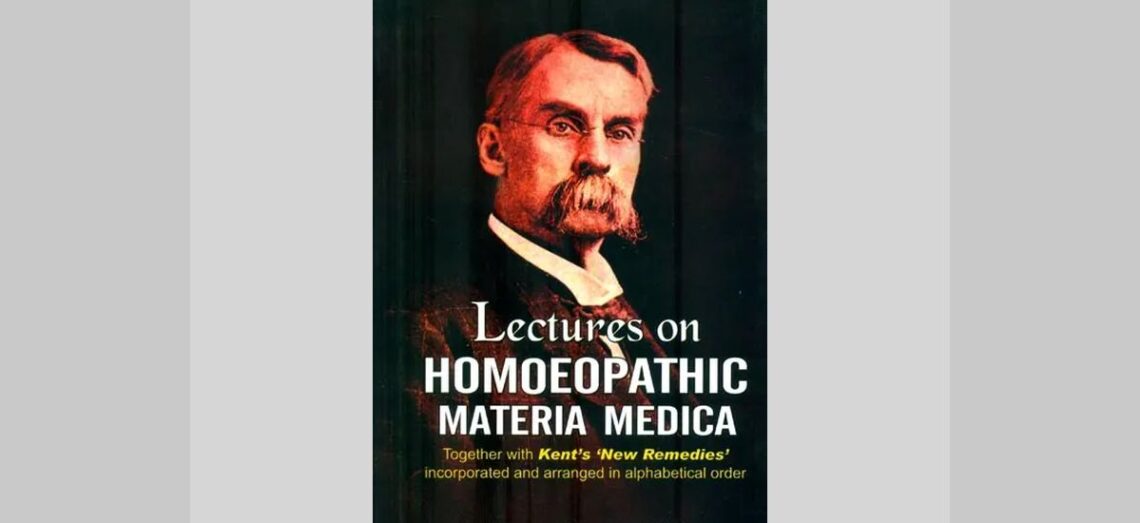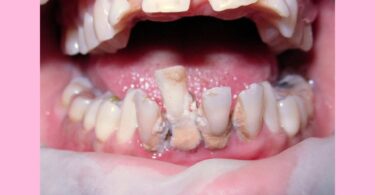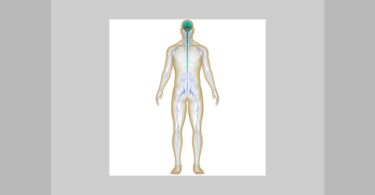This article is written for all of you intending to study homeopathy and who are in awe of the vast number of homeopathic remedies to be studied. The effort you make is extraordinary, but the energy you expend will be worth it. No one can master the whole thing; but, we can at least get the picture of the most common remedies in our mind.
The best way to understand the importance of the Materia Medica in homeopathy is by understanding Dr. Samuel Hahnemann in his teachings as given to us in The Organon of Medicine. Let me just mention a few of his ideas–aphorisms (§)–taken from The Organon:
§1: The physician’s highest and only mission is to restore the sick to health, to cure, as it is termed.
§2: The highest ideal of cure is rapid, gentle and permanent restoration of the health, or removal and annihilation of the disease in its whole extent, in the shortest, most reliable, and most harmless way, on easily comprehensible principles.
§3: If the physician clearly perceives what is to be cured in diseases, that is to say, in every individual case of disease (knowledge of disease, indication), if he clearly perceives what is curative in medicines, that is to say, in each individual medicine (knowledge of medical powers), and if he knows how to adapt, according to clearly defined principles, what is curative in medicines to what he has discovered to be undoubtedly morbid in the patient, so that the recovery must ensue – to adapt it, as well in respect to the suitability of the medicine most appropriate according to its mode of action to the case before him (choice of the remedy, the medicine indicated), as also in respect to the exact mode of preparation and quantity of it required (proper dose), and the proper period for repeating the dose; – if, finally, he knows the obstacles to recovery in each case and is aware how to remove them, so that the restoration may be permanent, then he understands how to treat judiciously and rationally, and he is a true practitioner of the healing art.
In §18 we learn that we will find nothing about a disease except the totality of symptoms, including its surrounding circumstances, through which the need for help is expressed by a patient. All the symptoms and circumstances that can be perceived in every single case of illness provide us the ONLY INDICATION, the only hint to a remedy that has to be chosen.
It is later, in aphorism 105 (§§105-120 are dealing with the basics on remedy provings on healthy persons), when Hahnemann tells us that it is the business of every true artist in healing, to research on the tools, that are intended to heal natural diseases and to research on the morbific (disease producing) power of the medicines. This gives us a ground for selection of a remedy that is associated with a row of symptoms of an artificial disease (gained by remedy proving), and that is most similar to the main symptoms of the natural disease that has to be cured. For Hahnemann, a disease is a mood or disgruntled mood of human health. Diseases are NOT and CANNOT BE mechanical or chemical changes of the material substance of the body and they do not depend on a material diseased matter. But they are spirit-like, dynamic derangement of life, of the vital force. (§31, footnote).
And then, in aphorism 106, we are taught, that the whole of the pathogenic effects of each remedy have to be known. All pathological symptoms and modified moods that each medicine produces in healthy persons have to be observed. It is only then that we can hope to find and select the best remedy for most of the natural diseases.
After we have learned that we have to find a medicine that is most similar to the main symptoms of the natural disease to be cured, in my opinion, it is the next Hahnemannian idea that really forces us to study our remedies (Materia Medica) extremely well: Every single medicine shows specific effects in the human body that do not appear just the same from any other remedy of a different kind (§118).
Similarly, in aphorism 120 we find, along the same lines, “… medicines, on which life and death, sickness and health depends, have to be most precisely differentiated from each other…. That way one comes to know them very well and can avoid any wrong choice when using them. Only an accurate choice of the remedy can provide early and lasting return of the biggest of the earthly goods – well-being of the body and the soul.”(§120).
If we are not willing to thoroughly follow these rules, frustration will be ours – I do not want to think of what will happen to the patients. So let us just accept what has to be accepted and let us study thoroughly the remedies available to us.
BUT HOW DO I STUDY THE MATERIA MEDICA?
Everybody has to find his/her own individual approach. Perhaps one has to invent one’s own method to study Materia Medica. Have a look at a well-stocked library. You will find books describing homeopathic medicines in poems. You will find books describing the remedies in drawings – either trying to portray the person fitting the constitutional appearance of a certain remedy and showing physical characteristics together with descriptions of symptoms that cannot be painted graphically, or in cartoons that exaggerate the remedy’s individualistic effects. Maybe you can compare a remedy with a person you know well….
There are many methods you can apply, all of them requiring repetition over and over again.
And still, you will never succeed in learning your remedies well enough without a written Materia Medica. So the question arises, which Materia Medica should I buy? Which one should I use? The market is flooded with Homeopathic Materia Medicas of prime/high/low quality. I started with two handy books: William Boericke’s ‘Pocket manual of homoepathic materia medica’ and Eugene B. Nash’s ‘Leaders in homoeopathic therapeutics’. I found Nash very difficult to begin with because it compares different remedies in almost every section. I always forgot what I had read. But even if such reading is so frustrating in the beginning, the remedies will increasingly visualize in our mind. The more you read those medicines again and again (…and again and again)… the better!
At this place let me suggest you to read the following lecture by Constantine Hering that I found at the website of Whole Health Now:
http://www.wholehealthnow.com/homeopathy_pro/hering_1.html .
What I want to do next is to provide you with a list of some books on homeopathic Materia Medica. Some Links to online Materia Medicas follow. The lists cannot be complete. This is why I want to invite you to give me a note of any book or link that should be added here. Do you want to write a book review to be added? You are welcome to submit it here. Kindly use the link at the end of the article.
In your studies, it would be unavoidable that some of your questions will remain unanswered. In this case, besides asking your lecturer, you are invited to pass by at hpathy.com’s FaceBook group at https://www.facebook.com/groups/hpathyfanclub . Tell everybody of your important or curious findings, ask questions that are not being answered in your books. You will learn that studying within a group is much more fun and will carry you through episodes when you are at the edge of giving up. I too, am much involved in this process of learning. And honestly, with every step forward the paces become larger and faster. But to me, the finish-line still seems to be as distant as on the first day….
To begin with:
Dr. William Boericke: Pocket Manual of Materia Medica with Repertory (American edition): Among the polychrests you will find many small remedies. Few mental symptoms. Good to get a brief overview of a remedy. The book is handy.
Dr. William Boericke: Pocket Manual of Materia Medica with Repertory (Indian edition): The repertory can not be compared with a true’ repertory.
Dr. H.C. Allen: Keynotes of the Materia Medica with Nosodes: Peculiar and characteristic symptoms are highlighted. Most detailed description of classical nosodes like Lyssinum, Medorrhinum, Psorinum, Pyrogenium, Syphilinum, Tuberculinum and others.
Dr. CM Boger: Synoptic Key: A handy, compact book.323 remedies with the most important symptoms and main effects. Characteristic organotropic relations/relationships and modalities are highlighted. Footnotes with original quotations from Pure Materia Medica and Chronic Diseases and others.
Carrol Dunham: Lectures On Materia Medica: Descriptions of 63 remedies. This is a very reliable work. The remedies are concisely described.
Dr. E. B. Nash: Leaders in Homeopathic Therapeutics: Outstanding for beginners. 200 remedies are covered. Many differentials.
Michael Rowan: The Homeopathic Coloring Book : 50 remedies are covered.
For advanced studies:
Dr. H.C. Allen: Encyclopedia of Pure Materia Medica (12 Volumes): Very detailed. References to the source of the proving or clinical evidences are given.
Dr. Eugenio Candegabe: Comparative Materia Medica: A book to help as a guide in differential diagnosis. Comparisons of mentals and personality structures of some of the big remedies. Analytical and psychological view on remedies. References to Kent’s repertory and Synthetic repertory.
Card Memorizer: “Homeopathic Trivial Pursuit”: For students: learning by playing the game. 500 questions with reference to the Complete Repertory.
Dr. H. L. Chitkara: Materia Medica of the Mind: Mental symptoms are the main concern of the book. Small medicines are considerably taken care of . You will find every mental symptom of Kent’s repertory.
Dr. John Clarke: Dictionary of Practical Materia Medica (3 volumes, British edition): Overview of each medicine, indications, strong or peculiar symptoms. Occasionally cases. A repertory of relationships (clinical and natural) gives in tabulated form complementary remedies, compatible and incompatible remedies, remedies which follow well and which the remedy under consideration follows well, remedy antidotes, and duration of action.
Dr. John Clarke: Dictionary of Practical Materia Medica (3 volumes, Indian edition): Much cheaper than the above. Physical qualitiy, too.
Catherine Coulter: Portraits Of Homoeopathic Medicines: Expanding Views Of The Materia Medica (vol. 1-3): This series helps the student of homoeopathy to learn and memorize the remedies and to put them into practice accurately. The information will also help the practitioner to revisit aspects which may enrich their prescribing options and to help them explore psychological types and behavior patterns.
Dr. D. M. Gibson: Studies of Homeopathic Remedies: With reference to the source of more than 100 remedies and historical uses. Systematic approach to appearance, psychology, toxicology, physiology, symptomatology, pharmacology.
Dr. Didier Grandgeorge: The Spirit of Homeopathic Medicines: The mystery and complexity of remedies is explored using experiences gained from more than twenty thousand consultations.
Dr. Didier Grandgeorge: The Spirit of Homeopathic Medicines: Essential Insights to 300 Remedies: See above.
Dr. Samuel Hahnemann: Materia Medica Pura: Documentation of Dr. Samuel Hahnemann’s remedy provings. It also shows the way how best to gain knowledge on materia medica.
Dr. Constantine Hering: Condensed Materia Medica: Description of the strongest symptoms of a medicine.
Dr. Constantine Hering: Guiding Symptoms of our Materia Medica (10 volumes): A very comprehensive work. Grading of symptoms according to a scale.
Dr. O. A. Julian: Materia Medica of New Homeopathic Remedies: Around 100 new remedies.
Dr. James Tyler Kent: Lectures on Homeopathic Materia Medica: Detailed and insightful descriptions on more than 200 homeopathic remedies.
Dr. K. N. Mathur: Systematic Materia Medica: Remedies are described according to their primary indications, contraindications, complaints, characteristics generals and modalities. It is based on Kent’s repertory.
Dr. Roger Morrison: Desktop Guide to Keynotes and Confirmatory Symptoms: Keynote symptoms of more than 300 remedies.
Dr. Robin Murphy: Homeopathic Remedy Guide (formerly entitled Lotus Materia Medica): It covers 1200 remedies on about 1900 pages.
Dr. E. B. Nash: Nash’s Expanded Work: All of Nash’s writings in one book.
Rene Otter: Quick Remedy Index to the Homeopathic Materia Medica: Here you can get help if you want to know in which book you can find informations on a certain, even rare, remedy.
Dr. S. R. Phatak: Materia Medica of Homeopathic Remedies (2nd edition): Short description on 411 remedies. Sources from Allen, Hering, Boger, Kent, Boericke, Clarke.
Dr. Abdur Rehman: Encyclopedia of Remedy Relationships in Homeopathy: What to describe on the second consultation? Here you find information on well following remedies regarding to the symptoms present. Remedy relationships are described in a unique precision and complexity.
Heli O. Retzek: Complete Materia Medica of the Mind: Mind symptoms of 1029 remedies, with their grading and source.
Dr. H. A. Roberts: Study of Remedies by Comparison: Side-by-side comparisons of several remedies at a time.
Margaret Roy: A First Materia Medica: Take lessons in homeopathic materia medica.
Rajan Sankaran: An insight into Plants: You seek insight to ten miasms? You find it here. This book helps to understand relationships and classifications of plants from a homeopath’s view. The author’s experiences in casetaking will give you very worthy hints for your daily work.
Rajan Sankaran: Soul of Remedies: It is suggested to read His former books first. One hundred remedies are covered with narrative style. The reader gets the basic ideas of each remedy, their ‘soul’.
Rajan Sankaran: The Substance of Homeopathy: New insights on miasms. Materia Medica section with minerals and metals.
Dr. Jan Scholten: Homeopathy and Minerals: An introduction to homeopathic and chemical relationship of remedies.
Dr. Jan Scholten: Homeopathy and the Elements: A number of mineralic and metalic elements and their chemical compounds are presented here as hardly found in any other Materia Medica. Remedies are grouped together corresponding to their appearance in the periodic system.
Dr. Frederik Schroyens: 1001 Small Remedies: Extracted from the Synthesis repertory, this is an excellent way to study the small remedies!
Dr. Margaret Tyler: Drug Pictures: A book for the practicioner. Descriptions of 100 remedies using material by Hahnemann, Kent, Hering, Allen, Farrington, Hughes, Nash,…
Dr. P. M. Verma: Encyclopedia of Homeopathic Pharmacopeoeia (3 volumes): Monographs of 1860 homeopathic remedies. Alphabetically ordered, they are mentioned with their pharmacological, botanical, zoological names and with names in different languages.
Frans Vermeulen: Concordant Materia Medica (2nd edition): Basis of this work are classics in homeopathy by Allen, Boericke, Boger, Cowperthwaite, Clarke, Hering (10 volumes!), Kent, Lippe, Phatak, Pulford, Vermeulen. Repetitions are avoided, this makes this work a compact compendium.
Frans Vermeulen: Synoptic Materia Medica: Vermeulen uses 22 classical and modern resources. Approach to remedies by their organotropy, modalities, cardinal symptoms. Information on small remedies by old and new masters are integrated.
George Vithoulkas: Materia Medica Viva (8 volumes): This tremendous work is less suitable to be used for systematic work and daily reference, but is to be read for grasping the essential properties of homeopathic remedies. Very detailed portrayals of remedy pictures. A good time in reading.
Links:





